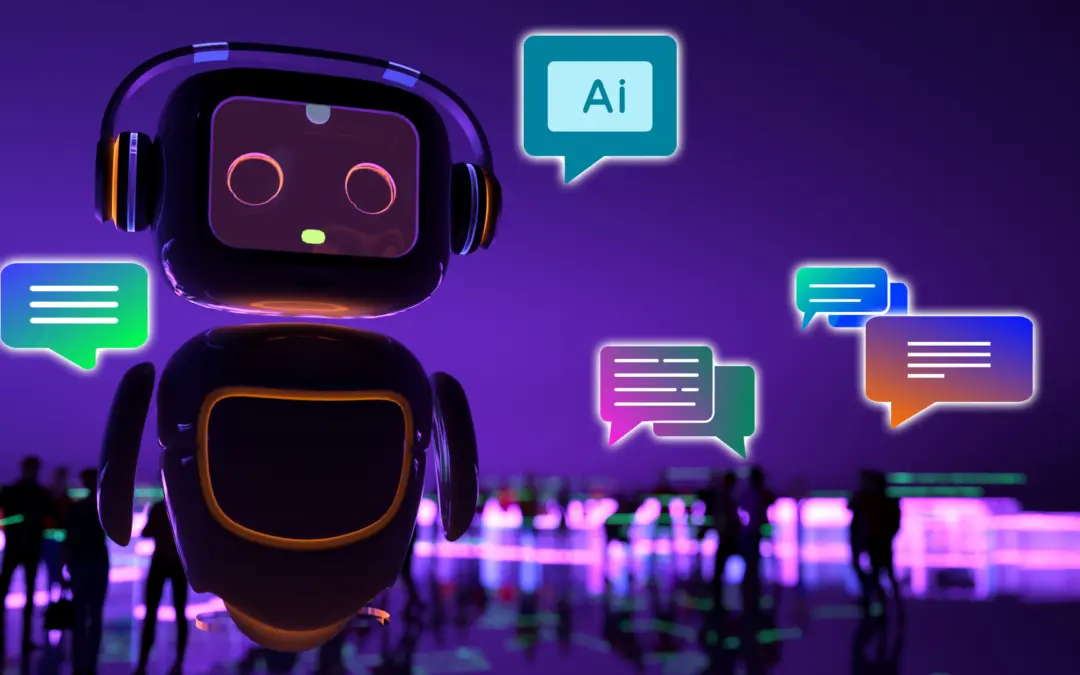Today, microcredit institutions can improve their efficiency, reach new customers, and provide personalized experiences thanks to chatbots for microfinance: AI-powered tools capable of automating processes, offering advice, and promoting financial inclusion.
In this article, we’ll explore how technology is making microcredit services more accessible and sustainable, analyzing data, use cases, and implementation strategies.
Estimated reading time: 1 minute
Table of contents
Current situation and market data

The microfinance sector was born to offer accessible financial services to individuals and microenterprises who do not have access to the traditional banking system.
According to the World Bank’s Global Findex Database 2025, financial inclusion continues to grow significantly thanks to the digitalization of services.
The latest edition of the database, based on interviews conducted in 2024 in 141 economies, shows that 79% of adults worldwide now have an account with a financial institution or mobile service provider, compared to 74% in 2021.
Another significant finding concerns digital payments, used by 62% of adults globally in 2024, an increase of almost 30% compared to ten years ago. This trend highlights how digital tools—including virtual assistants and chatbots for microfinance—are becoming increasingly strategic channels for enabling access to credit, savings, and microloan services.
Despite progress, the report highlights that 1.6 billion people remain excluded from the formal financial system, especially in low-income countries or rural areas where digital connectivity is limited. Gender and income gaps also persist, with women continuing to have less access to digital services than men.
In this context, conversational artificial intelligence and chatbots for microfinance are key tools to reduce these inequalities, offering personalized assistance, automated onboarding services, and microcredit, even through low-bandwidth channels such as WhatsApp or SMS.
How microfinance can benefit from AI
AI in finance uses advanced algorithms, machine learning, and natural language tools, such as microfinance chatbots, to analyze data, automate processes, and personalize customer interactions.
Unlike traditional software, AI systems learn from data, mimic human reasoning, and improve over time, becoming more accurate and efficient. In microfinance, this means being able to:
- Assess credit risk more inclusively, even for clients without a traditional banking history, by integrating alternative data such as phone payments or consumption habits.
- Prevent fraud through predictive transaction analysis and real-time detection of anomalous behavior.
- Offer personalized financial advice, accessible via chatbot or app, to help clients better manage microloans or savings.
- Ensure continuous, 24/7 assistance through chatbots capable of answering questions, collecting documents, sending reminders, and supporting digital onboarding.
AI also contributes to automated regulatory compliance by analyzing transactions and flagging anomalies or risks in line with anti-money laundering (AML) laws.
Chatbots for Microfinance: Case Studies

The adoption of chatbots for microfinance and other AI solutions finds application in various operational areas:
Microcredit
Microcredit platforms are leveraging microfinance chatbots to make applying for small loans more accessible, especially for those without a bank account or with limited access to traditional services.
Chatbots guide users step-by-step through the application process, allowing them to digitally upload the necessary documents and providing clear explanations of the requirements.
Artificial intelligence analyzes the data entered to generate an automatic risk assessment and recommend an appropriate loan amount. Furthermore, contracts can be signed digitally within the platform itself, reducing operating times and costs and improving the user experience. The chatbot can also send personalized payment notifications and suggest sustainable repayment strategies, increasing the likelihood of microcredit success.
Leasing and microleasing with chatbots for microfinance
Chatbots for microfinance applied to leasing and micro-leasing allow for the automation of many of the tasks that traditionally require human intervention, such as document collection, customer profile verification, and the configuration of the most suitable offer. Thanks to predictive AI, these tools can estimate default risk and suggest personalized contractual terms, optimizing the financial institution’s cash flow. Customers receive immediate information on leasing terms, payment plans, and due dates, without having to contact a representative directly. The conversational interface also supports requests for contract modifications or lease term extensions, improving flexibility and customer satisfaction.
Payroll loans and personal loans
For personal loans and salary-secured loans, chatbots streamline the entire process, from the pre-qualification phase to the disbursement of the loan. The bot can automatically calculate the maximum loan amount based on the customer’s income and financial commitments, suggest sustainable amounts, and guide the user through uploading the necessary documentation. Throughout the process, AI monitors the application status, sends real-time updates, and anticipates any potential issues, reducing response times and the operational burden on human operators. This makes the process faster, more transparent, and more secure, increasing the efficiency of the financial institution.
Payment and transaction management
Chatbots allow customers to manage payments and transactions easily and securely, directly through a conversational interface. Users can check their account balances, receive automatic due date reminders, and schedule recurring payments. AI integrates advanced authentication systems and real-time anti-fraud monitoring, detecting suspicious activity and preventing unauthorized transactions. Some advanced systems also offer personalized advice on spending habits, suggesting, for example, installment plans or savings plans based on the user’s financial behavior. This automation improves the accuracy and security of transactions, reducing human error and increasing customer trust in digital services.
How to Implement a Chatbot for Microfinance
Implementing an effective microfinance chatbot requires a well-defined strategy.
Here are the key steps:
- Define the goals
Decide whether the chatbot will support customers during onboarding, manage loan applications, or provide after-sales support.
- Choosing the AI platform
When deciding to implement a chatbot for microfinance, it’s essential to carefully consider the technical architecture you’ll adopt. Specifically, you can choose between no-code/low-code platforms or API-first models.
No-code / low-code platforms
No-code platforms allow you to build conversational flows and integrations without writing complex code. They offer drag-and-drop visual interfaces, predefined forms, rules management, and integration with CRM and management systems via connectors. This approach is particularly suitable for:
– Reducing rollout times (often weeks instead of months);
– Allowing non-technical teams (product, marketing, operations) to actively participate in chatbot creation;
– Maintaining low development and maintenance costs, especially in the initial phases;
– Gradually scaling by integrating advanced features as experience grows.
For these reasons, no-code platforms are generally preferred by SMEs and microfinance providers looking to experiment quickly and with less risk.
API-first / custom models
An API-first or custom solution offers greater flexibility: each chatbot component (NLP, routing, integration, business logic) can be developed or selected independently. This approach is useful when:
– You want to build custom architectures with proprietary components;
– You have specific scale, security, or performance requirements;
– You plan to fully integrate with complex legacy systems.
However, an API-first implementation requires more advanced technical skills, longer development times, and higher development and maintenance costs, at least in the initial phases. - Train the model
Use real-world, GDPR-compliant data to train your microfinance chatbot on frequently asked questions, application forms, and credit approval processes.
- Integrate advanced features
The integration of advanced features allows microfinance chatbots to go beyond simple automated responses, offering smarter, more secure, and personalized services:
NLP (Natural Language Processing): Thanks to natural language processing, AI systems understand and interpret written or spoken human language. This means that customers can ask questions in natural language, and the AI will be able to provide accurate answers, guide the user through complex processes, and understand the context of their requests. For example, a customer can ask, “Show me my outstanding payments” or “What loans can I apply for?”, and the AI will respond contextually and accurately.
Document recognition: AI can automate the reading and processing of financial documents such as contracts, pay slips, IDs, or bank statements. This speeds up the collection of information needed for loans, microcredit, or leasing, reduces manual errors, and simplifies documentation management. Users can upload documents directly to the platform, and the AI will verify them, extract relevant data, and automatically update internal systems.
Workflow automation: Daily financial processes such as payments, due date reminders, credit limit notifications, or application status updates can be fully automated. AI can send personalized reminders to customers, trigger alerts in the event of anomalies or impending due dates, and even complete routine tasks without human intervention, improving efficiency, accuracy, and customer satisfaction. - Monitor and improve
Continuously analyze conversations to improve responses and add new features based on customer feedback.
Conclusions
Chatbots for microfinance automate processes, reduce costs, and improve service quality, allowing even the unbanked to access fast, transparent, and secure microcredit solutions.
In an increasingly AI-driven future, microfinance institutions that adopt these technologies will be able to ensure efficiency, scalability, and social impact, becoming key players in a new, more equitable and sustainable economy.
CHATBOTS FOR MICROFINANCE – FAQS
È un assistente virtuale basato su AI progettato per automatizzare l’interazione con i clienti nel settore del microcredito, gestendo richieste, domande e operazioni finanziarie.
It reduces operating costs, speeds approvals, improves customer experience, and promotes financial inclusion.
Yes. Next-generation chatbots integrate advanced security protocols and comply with GDPR and AML regulations, protecting users’ sensitive data.
No, but it can handle repetitive tasks, leaving human consultants to deal with more complex or sensitive cases.
With a no-code platform, a pilot project can be up and running in 3-6 weeks, with positive ROI within the first 3 months of use.

